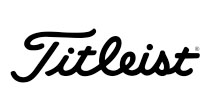
News
The Coomer Corner: Variety is the Spice of Life (Golf)

(Rules for the Game of Golf)
By Bill Coomer
According to Wikipedia, who else, the history of the Stableford format began over 100 years ago and created by Dr. Frank Barney Gorton Stableford. His idea was to stop golfers from giving up after starting their round off poorly. The Stableford format was first used informally at the Glamorganshire Golf Club in Penarth, Wales, in 1898 and as a competition in 1932 at Wallasey Golf Club in England.
There are several benefits to this type of event including the speed at which the rounds can be played. Once a player has reached a certain number of strokes on a hole, the number of points they can score has diminished to zero, therefore, there is no need to complete the hole. This format is also good for a player’s pride because even if you have a bad score on a few holes, you can score well enough on other holes to be competitive.
The PGA Tour has been using this format for several years and was probably one of the most popular viewing events when conducted at Castle Pines Golf Club in Castle Rock, Colorado from 1986 to 2006. Known as THE INTERNATIONAL, the tour stop used a modified stableford format for scoring. Davis Love III and Phil Mickelson were both two-time winners.
Using the Stableford format as the lead in for the next rule in our series was an easy choice. I doubt that many of us have played most of the other forms of competition listed in Rule 21 – Other Forms of Individual Stroke Play and Match Play but Stableford has been offered at many clubs and public courses.
There are four forms of competition listed in this rule that include stroke play and match play. They are as follows:
- Stableford
- Maximum Score
- Par/Bogey
- Three Ball Match Play
The overview of Stableford states the fact that this format is a stroke play competition where a point value is assigned to each hole using par as the target score. For an example, no matter what the par is on each hole, this chart shows the points available:
- More than one over the fixed target score = 0 pts.
- One over the fixed target score = 1 pt.
- Fixed target score = 2 pts.
- One under the fixed target score = 3 pts.
- Two under the fixed target score = 4 pts
- Three under the fixed target score = 5 pts.
- Four under the fixed target score = 6 pts.
You may have already guessed the winner is the player with the most points. The penalty phase of Stableford is quite lenient because many mistakes the player might make only costs them a hole without any points, rather than being disqualified. That does not mean you can’t be disqualified but it’s just harder to do.
A Maximum Score is just like it sounds. There is a maximum score you can take on a hole no matter how many strokes and penalties you may actually incur during the play of the hole. The score is usually set at double the normal par but can be altered by the Committee. Once again, play may be accelerated once a player reaches the maximum score and does not need to finish the hole.
The next format is a competition between the player and the hole! That’s right, you are competing against the hole you are playing at the time. But since the hole already has a score of par or bogey, depending on the competition, you must beat that score to win the hole. The more times you beat the score of the hole, the more holes you win. So, Par/Bogey is a stroke play competition using match play scoring.
Finally, Three-Ball Match Play provides three players a chance to compete against each other at the same time using one ball each. The main focus for the players is to identify whose turn it is to play the next shot. If a player plays out of turn, his opponents have the choice to recall the shot or not. If one opponent recalls the shot and the other does not, the player will then have two balls in play to finish the hole.
We are used to seeing lots of stroke play championships and some match play competitions, but it may be worth your time to investigate these other forms of play. It’s like trying the blueberry syrup on your pancakes instead of the usual maple topping. You might just like it, occasionally!

















































